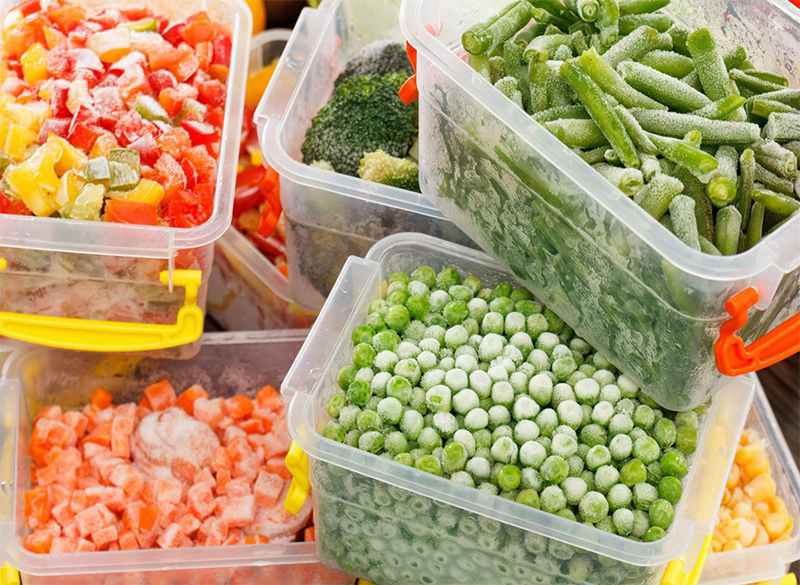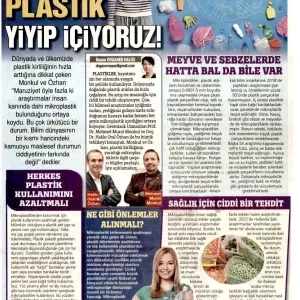We're Unknowingly Eating and Drinking Plastics!

Monkul and Özhan, in their alarming statement, highlighted the rapid surge of plastic pollution both globally and in our country. They revealed, "The extent of our exposure is so vast that microplastics have been discovered in human blood, a truly terrifying revelation. This means that each one of us is unknowingly consuming plastics, a fact that should deeply concern us. Regrettably, the general public remains largely unaware of the gravity of this situation, with only a segment of the scientific community fully comprehending its severity."
Plastics have infiltrated every aspect of our lives, leading to an alarming surge in natural plastic waste. This is not just a problem, it's a crisis. This rapid escalation poses a grave and immediate threat to humanity, as scientific studies have revealed that our very sustenance, from the water we drink, the food we eat, to the air we breathe, is contaminated with microplastics. We had a sobering discussion with Geotechnical Experts Prof. Dr. Mehmet Murat Monkul and Assoc. Prof. Dr. Hakkı Oral Özhan shared chilling information about the microplastics that result from plastic pollution. Here are their eye-opening statements:
EVERYONE MUST REDUCE PLASTIC USAGE
Each one of us must take immediate and decisive action to reduce our plastic usage. We can start by choosing glass bottles over plastic water bottles whenever possible. Instead of using teabags, we should brew our tea. It's a challenge, but we need to avoid plastic-packaged foods. We should also avoid plastic cutlery and opt for glass or porcelain cups instead of "paper" cups marketed as disposable. Let's use cloth or paper bags instead of plastic for shopping. Some cosmetic products like facial wash gels and toothpaste contain microplastics, so it's important to read the ingredients and choose organic ones. Synthetic clothing made of polyester, acrylic, or nylon contains microplastics, so we should prefer natural fabrics like cotton or linen. Washing our synthetic clothes at lower temperatures can significantly reduce the release of microplastics. And lastly, to ensure plastic recycling, let's collect plastic waste separately at home and dispose of it in designated plastic recycling bins outside.
WHAT MEASURES SHOULD BE TAKEN?
The first step that comes to mind in reducing microplastic pollution is to decrease plastic consumption and give up single-use plastics. To fight microplastic pollution, we need to focus on the areas where plastic wastes are stored. These places are also significant sources of pollution where large plastics break down into microplastics due to various physical and chemical effects. Proper storage of plastic wastes that trigger the formation of microplastics and ensuring the impermeability of these areas with appropriate geotechnical applications to prevent them from mixing with the soil are necessary. It is evident that when the isolation of solid waste storage areas in our country is not done adequately, plastic waste will lead to soil and water pollution.
MICROPLASTICS ARE EVEN IN FRUITS, VEGETABLES, AND HONEY
Microplastics, the tiny plastic particles that result from the degradation of plastic waste, are not confined to a single region or environment. They are a global issue, found in freshwater sources, agricultural soils, oceans, and even the poles. These particles, ranging from 0.0001 to 5 mm in size, can enter our bodies through the water, food, and air we breathe. Their lightness allows them to mix into the air from water and soil, and they can be transported to distant places by wind and snowflakes. Research has shown an increase in the microplastics we inhale, with these particles even being identified in our lungs. A 2018 study by American scientists found plastic particles in 93% of bottled water samples, which have been detected in hot beverages in plastic-lined paper cups. Even our fruits and vegetables, like apples, carrots, and broccoli, can contain microplastics absorbed by their root systems.
Further research has identified microplastics in table salt, rice, and honey. Moreover, large fish, sea turtles, and waterfowl ingest plastic particles along with the fish and mussels they consume. Thus, microplastics can also enter our bodies through foods like fish and mussels that we eat.
A SERIOUS THREAT TO HEALTH
Our understanding of the detrimental effects of microplastics on human health is evolving through ongoing research. While it's true that they can be eliminated through the gut or urine, studies in the health field, have raised concerns about their potential to infiltrate internal organs, circulate in the bloodstream, and accumulate in the human body. The disruptive impact of microplastics on the hormonal system and their potential to increase cancer risk are areas of active investigation. In a chilling discovery, Dutch researchers' international article published in 2022 found microplastics in human blood. This finding is a stark reminder of the potential threat, as the article's concluding question asks, 'How might microplastics affect the functioning of the immune system and related diseases?' There is also a growing suspicion that the entry of microplastics into the human body could trigger various issues, including cognitive development disorders and reproductive disorders.
5200 MICROPLASTIC PARTICLES ENTER THE HUMAN BODY ANNUALLY
Research from Rutgers University in the United States reveals that a staggering 5200 microplastic particles infiltrate a person's body yearly through various foods. This alarming figure underscores the urgent need to address our unconscious consumption of plastics, as it poses a significant threat to our environment and health.
Media: Sözcü

